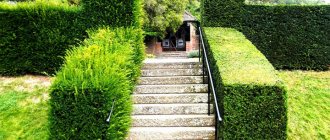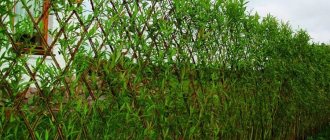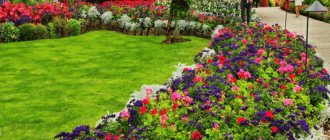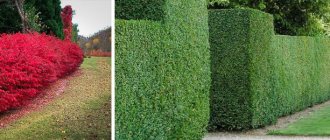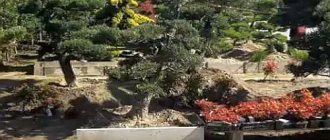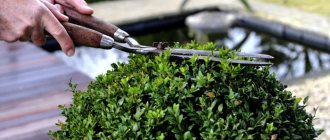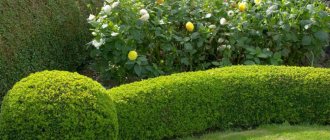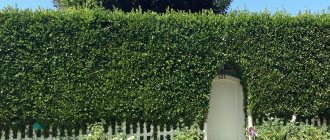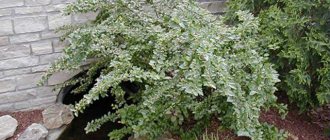14.01.2020
Climbing vines can perfectly decorate landscape design. They are used as hedges, decorate the walls of buildings, shade gazebos, and create beautiful flower bed compositions. To highlight the shape of plants and direct vines vertically, metal trellises work best. You can buy trellises in a collapsible, stationary form, choosing the appropriate shape and size of the structure.
Climbing plants are divided into ornamental flowering and deciduous, annuals and perennials. Some of them require constant care and attention, others just need to be planted and watered several times. In the presented rating of the most beautiful vines, beginners and experienced gardeners will be able to choose suitable specimens for their garden.
morning glory
In countries with warm winters, morning glory is grown as a perennial plant. In the climatic conditions of Russia, the liana blooms from May until the first cold weather, completing the growing season at temperatures below +10? C. The flowers have a variety of colors: from crimson, purple and blue to variegated varieties.
Necessary growing conditions:
- well-lit area;
- light soil, not overloaded with fertilizers;
- moderate watering (2 - 3 times a week at the root).
Sowing of seeds is carried out at the end of April - beginning of May directly into the ground, immediately installing a support at the site of the first shoots. Morning glory looks great on a fan trellis. A design with a mesh on a metal support is also suitable for it.
Campsis rooting
To form a campsis, choose a strong, high support. It grows well over the summer, forming delicate tubular flowers on young shoots. The liana blooms twice during the warm season: in spring and at the end of summer. For planting, it is preferable to choose lighted and not very shaded places.
If you cover the Kampsis for the first winter, it will become a perennial. In the future, insulation for the winter will not be needed, the woody vine will be able to withstand frosts down to -30? C, and frozen young shoots will quickly recover in the spring.
Growing conditions:
- moderate watering with transition to heavy watering on hotter days;
- minimum fertilizers;
- vertical formation of vines;
- winter insulation directly on the trellis.
Campsis does not like drafts and waterlogging of the soil.
Horizontal cordon
To form a crown in the form of a horizontal cordon, plants are planted at a distance of 4–5 m from each other. As in the case of a mesh cordon, after spring pruning, two side branches (shoulders) are left, but they are not intertwined, but tied horizontally.
Typically, a horizontal cordon has 1–2 tiers. The first is laid at a height of 20–30 cm from the soil level, the second – after another 50–60 cm.
This is what an apple tree looks like, formed in the form of a two-tier cordon
U-shaped cordon
First, the seedling is formed in the same way as for a horizontal cordon. And when the shoulders grow to 45–50 cm, they are directed vertically. The result is a skeleton of the crown, similar to a candlestick.
After a year, branches growing vertically can also be bifurcated.
A hedge of espaliered trees with a U-shaped crown
Palmetta
A common way to form a crown is in the form of a fan of branches extending evenly from the central trunk. The outline of the crown resembles a palm leaf, which is why the shape was called palmette.
Branches can be directed in different ways:
- horizontally, forming 4–6 tiers;
- at an angle of 45° - like a fan;
- in the form of a candelabra - 4–6 vertical branches are placed on each horizontal arm;
- in the form of a single-tier horizontal cordon, from which the branches are directed freely upward.
Palmette shaped apple trees
Trees on a trellis can be given any other shape: circle, square, oval, pyramid - it all depends on the imagination and skill of the gardener. For more information about molded gardens, watch the video.
Clematis
Perennial clematis amaze with the abundance of varieties, colors and shape of buds. They braid trellises, arbors, and any vertical supports with delicate shoots and flowers. Clematis blooms all summer, producing buds on young stems.
An important condition for growing is the formation of the vine:
- in the first two years, the buds are removed from it to form the base of the bush;
- in the third year, leave a minimum number of flowers;
- Abundant flowering begins at 5-6 years.
Clematis responds well to regular watering and fertilizing with mineral fertilizers. It is recommended to cover the perennial for the winter.
Ivy
Among decorative deciduous climbing plants, garden ivy takes the lead. It can creep along the ground, creating a background, entwining supports and brick walls. An important condition for growing ivy is the timely formation of green mass. Without pruning, the plant can cover an entire garden in a few years.
When choosing vines for the garden, it is important to take into account the terrain and the prospects for plant development. To make climbing flowers look beautiful, it is better to buy trellises or garden arches for them in advance. They will decorate the area many times and will serve for a long time.
A sophisticated architectural structure in the form of an arch transforms the garden. Depending on its location, the arch performs various functions: it opens up a view of picturesque views, is a portal or decorative element, a support for grape and flower vines, and a vestibule for a resting place. You can buy garden arches in a suitable color, size and shape.
Frame and cascade types of hedges (with photos)
Frame fence
Installing a fence on a frame is a convenient option for external fencing of a site. The frame will be a high fence, a self-made wooden lattice or a small mesh.
Plants can be directed to grow vertically or horizontally along the frame. When creating a fence on a frame, you should remember that the roots of climbing plants require regular watering.
Look at the photo to see what a frame hedge looks like in a dacha:
Cascading hedges
Multi-row cascading green fences are painted with some fantasy touch. They combine freely growing and molded “steps”. Such hedges are created from various types of shrubs and trees.
Also, a multi-row hedge combines plants of the same species, but of different varieties, with different colors of foliage or needles. Combinations of purple and green beech or green and variegated holly look good in a multi-row cascading hedge.
Planting multilayer living fences requires quite a lot of space, but they more effectively protect the site from highway noise, polluted atmosphere, prying eyes and uninvited visits.
Below are photos and names of other types of hedges.
What requirements must the design meet?
Garden arches are made of brick, wood, plastic and metal. You can make stationary stone arches with your own hands, but it is more economical and easier to buy a metal arch. An affordable price allows you to order several collapsible structures at once, which, when combined with each other, create a beautiful garden design.
When choosing a design, it is advisable to pay attention to the following functional requirements:
- the parts are made from high-quality, durable material that will withstand the weight of climbing plants for several years;
- the surface of the structure is protected by a paint coating and will not be exposed to rain, sun, snow and wind;
- the height of the passage is convenient for all family members;
- the appearance meets the tastes of the owners, remains aesthetically pleasing and attractive at any time of the year.
Types of trellises, main characteristics
By type of material, trellises are divided into:
- metal;
- wooden;
- plastic;
- from the mesh;
- from available materials (wire, fishing line, rope, etc.).
The metal trellis is considered the most durable. It is well suited for heavy plants such as grapes and fruit-bearing plants. For dachas, wooden trellises are very popular. The structure of the tree fits well into the landscape design with its naturalness and environmental friendliness. Plastic, wood, and wire are often used to make trellises for indoor plants.
Important! Before installation, wooden trellises must be treated with impregnation to prevent rotting and the development of fungi and larvae.
Types of structures are divided according to the type of foundation:
- single-plane;
- two-plane;
- horizontal;
- decorative.
If the first three are intended to increase the productivity of agricultural land and vineyards, then the last type has a purely decorative function.
Decorative garden trellises are very diverse:
- square;
- rectangular;
- triangular;
- arched;
- trellis obelisk;
- ladder;
- wall;
- with diamond-shaped cells;
- with square cells;
- fan;
- diamond;
- chevron;
- mill;
- round;
- with ground stand,
Use Cases
Functionally, garden arches can be independent decorative elements and serve an auxiliary function. Among the various options for using architectural structures in the garden, the following are possible:
- installation of a fence next to the load-bearing supports above the gate to the garden for additional decoration with flowers;
- visual separation of garden areas;
- vertical support for climbing roses, ivy, climbing vines;
- base for a children's swing or hammock;
- basis for installing garden lighting elements;
- a shadow barrier for a family recreation area if there are garden chairs or benches nearby.
How to decorate an arch
Climbing plants are used to decorate arches in the garden, including:
- wild and cultivated grapes;
- perennial vines (wisteria, campsis, clematis);
- annual flowers (sweet peas, kobeya, morning glory, decorative pumpkins);
- climbing roses, honeysuckle.
Along with arches, trellises, plant supports, and decorative fences help shape the appearance of the garden. They give the area a well-groomed appearance, save the gardener’s energy and create a cozy atmosphere in the suburban area.
Strawberries are one of the most popular garden crops. It is grown for personal and commercial purposes. The berry is demanding in terms of care and growing conditions, and is often affected by diseases and pests. To make it easier to care for garden strawberry bushes and protect them from diseases, gardeners use special supports.
Advantages of the trellis method
The main advantage of trellis plantings is their compactness. The crown of such trees is only 25–30 cm wide, and taking into account the approaches, no more than a meter. This allows you to establish a full-fledged orchard even in very small areas.
The trellis method has other advantages.
- The branches are better illuminated and ventilated, which reduces the risk of fungal diseases.
- The fruits are not shaded, and although they are fewer in number, they are of better quality, larger, and ripen evenly.
- The low height and easy access to each branch make it easier to care for trees - pruning, spraying, harvesting.
- Such trees can be grown on the border of a property without fear of discontent from neighbors.
- Trellis look unusual and serve as garden decoration.
With the help of trellis plants you can decorate an unsightly structure
How to Use Flower Supports for Strawberries
Structurally, the support is a metal stand in the form of a ring on holders that are immersed in the ground. Leaves, flower rosettes, and berry clusters are placed on the ring so that they do not touch the soil surface. An individual support is installed for each bush in the spring during sanitary measures such as pruning, loosening and fertilizing. After the end of the fruiting season, it is advisable to remove the supports so that the metal does not contribute to freezing of the bush.
How support protects berries from diseases
Not all strawberry varieties have tall peduncles that can hold the fruit above the ground surface. Many berries fall on the soil when ripe, which provokes gray rot and spotting. In addition, slugs often attack lying fruits, destroying the crop. By lifting strawberries on a support, the gardener ensures crop protection throughout the season without spending effort and money on pest control.
Strawberry supports are distinguished by the height and shape of the structure. Before buying supports, it is advisable to check the height of the strawberry bushes. Universal designs are also suitable for flowers, giving them a well-groomed appearance and preventing the lush plant from sprawling on the ground. The choice of plant supports is wide; among those presented, you can choose those that are suitable in terms of price, appearance and functionality.
Giants in action
It is impossible not to mention the tall plants, exceeding the five-meter mark. To create this type of hedge, you will need to resort to the services of fast-growing plants such as hazel, black and white mulberry, hornbeam and holly. Decorative apple and plum trees, beech, linden and maple will look good.
If you plant flowering shrubs or mixed borders at the base of a high hedge, you will achieve stunning decorativeness on your site.
